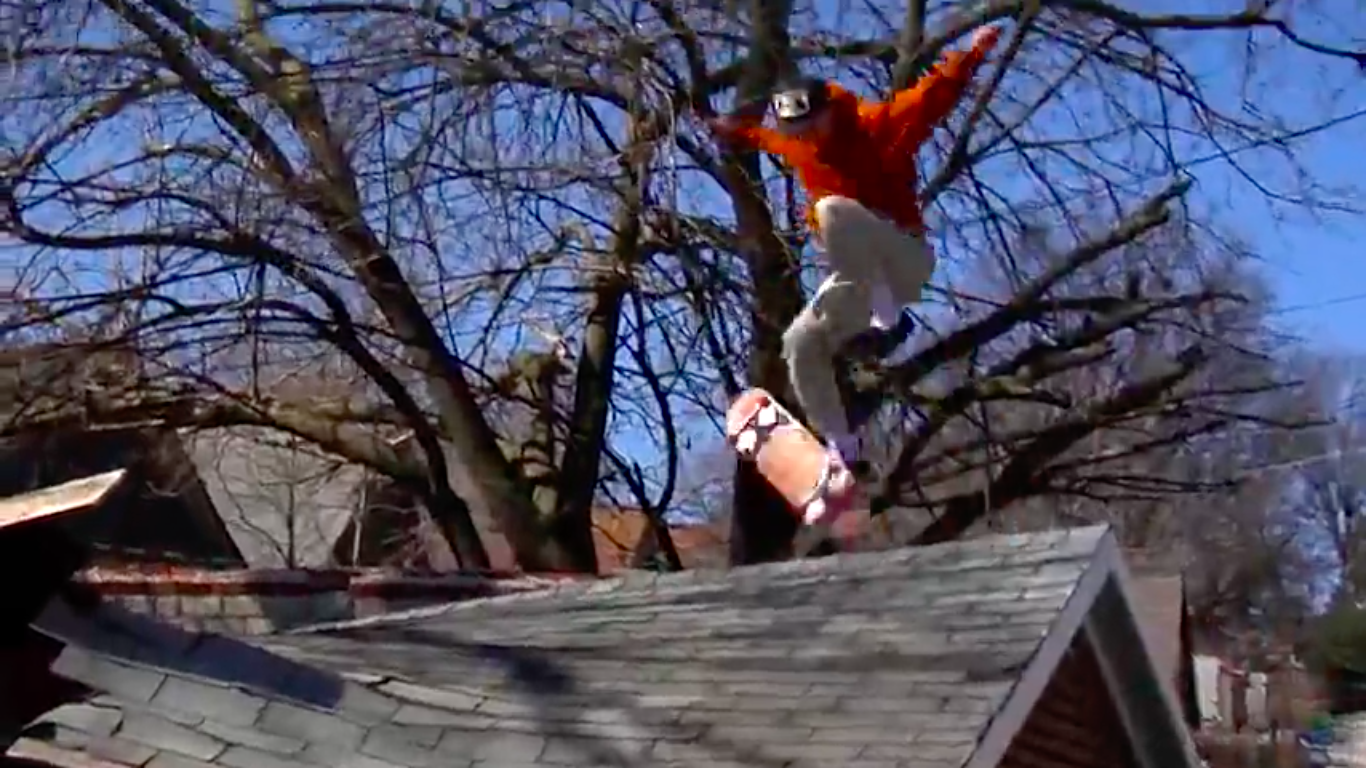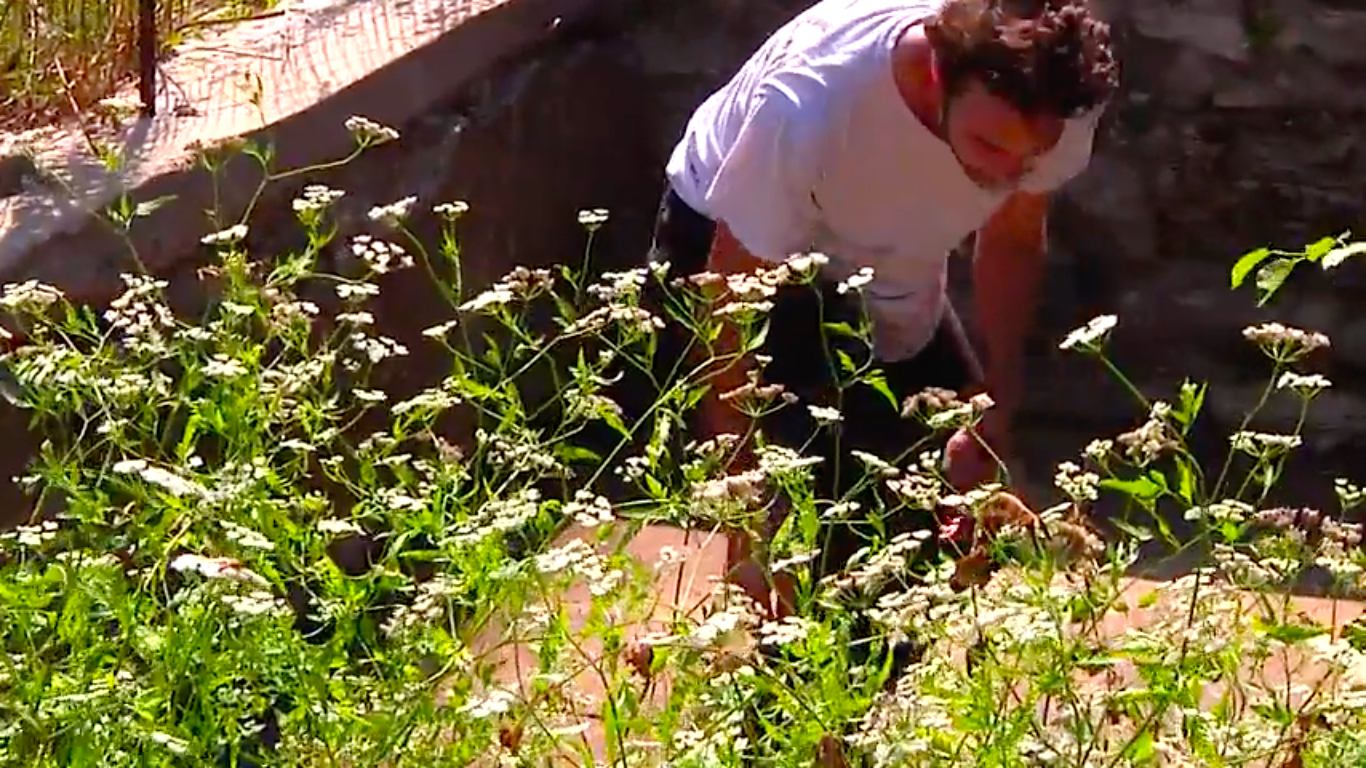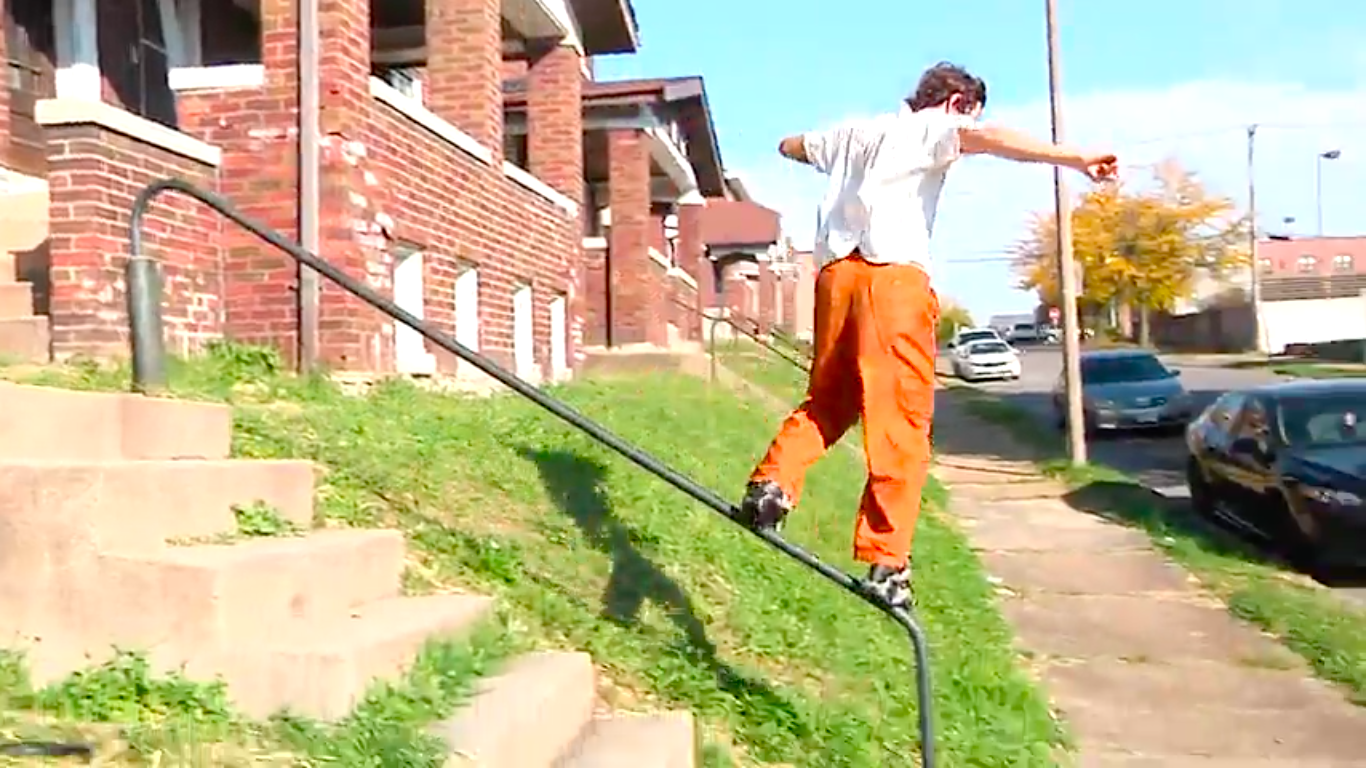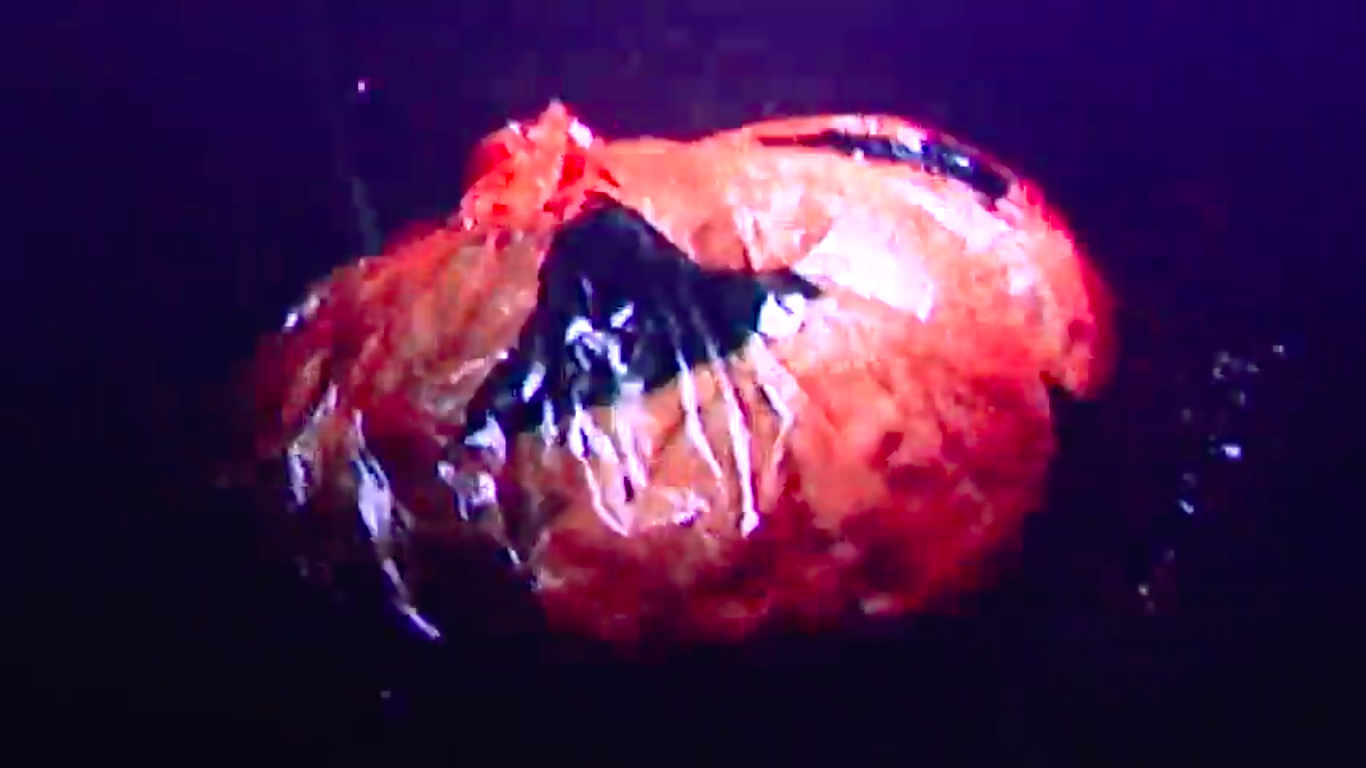Twirl: On Brandon Yuenger’s Stained
I want to rise so high that when I shit I won't miss anybody.
-William Gass, “In The Heart of The Heart of The Country”
Watching Brandon Yuenger’s brilliant new video, Stained, you might notice something unusual about the spots. There’s plants, and lots of them. It’s easy to forget that St Louis, a city more commonly associated with dissolution and urban blight, is ensconced in the fertile Mississippi Valley, right in the middle of farm country. Flora abounds, particularly in summer, when the air is so thick with the scent of foliage it practically tastes green. In Stained, their abundance adds to St Louis’ post-apocalyptic appearance, and, like fertilizer, nourishes the video’s ambivalent sense of hope.
Indeed, an underlying verdancy pervades all of the clips—weeds grow out of the cracks, sometimes threatening to engulf entire spots. The skaters, too, appear to have metabolized this fecund environment. Spot-selection skews toward parking lots grown-over into patchy meadows, loading docks surrounded by swampy pits, cavernous stair sets, and backyards-cum-forests. The locus, however, is the alleyway. There, Brandon Micah kickflip 5050s a vine-tangled ledge. Alex Kehoe 5-0’s an overgrown dumpster. And what allows Max Wheeler to skate the roof of a garage is clearly the decomposition of its load-bearing timbers.
-William Gass, “In The Heart of The Heart of The Country”
Watching Brandon Yuenger’s brilliant new video, Stained, you might notice something unusual about the spots. There’s plants, and lots of them. It’s easy to forget that St Louis, a city more commonly associated with dissolution and urban blight, is ensconced in the fertile Mississippi Valley, right in the middle of farm country. Flora abounds, particularly in summer, when the air is so thick with the scent of foliage it practically tastes green. In Stained, their abundance adds to St Louis’ post-apocalyptic appearance, and, like fertilizer, nourishes the video’s ambivalent sense of hope.
Indeed, an underlying verdancy pervades all of the clips—weeds grow out of the cracks, sometimes threatening to engulf entire spots. The skaters, too, appear to have metabolized this fecund environment. Spot-selection skews toward parking lots grown-over into patchy meadows, loading docks surrounded by swampy pits, cavernous stair sets, and backyards-cum-forests. The locus, however, is the alleyway. There, Brandon Micah kickflip 5050s a vine-tangled ledge. Alex Kehoe 5-0’s an overgrown dumpster. And what allows Max Wheeler to skate the roof of a garage is clearly the decomposition of its load-bearing timbers.
Like demons, the skaters populate this post-industrial Hades, with their spot foraging mentality feeding into the fashion, too. New, or even conventional styles (i.e. highwater Dickies and a hoodie) have been replaced by clothes that offer better camouflage, sourcing their costumes from gas stations and head shops in a barrage of weed leaf appliqués, Canadian tuxedos, band patches, and all manner of ill-fitting pants. For the most part, the style choices allow them to blend more seamlessly into the post-human environment, but the same suspension of disbelief has more significant implications when concerning the skater’s more quixotic decisions, such as Yuenger’s resurrection of the soap shoe. Looking back, the grindable sneakers were the product of multiple missteps (pun intended): no one asked them to make skateboarding more convenient, though it was the conflation of skating and rollerblading that represented the company’s worst offense. I still blush with humiliation at the thought of being called a poser. Yet, when Yuenger dons the inordinately heavy sneaker, earnestly sprinting in lines, or gingerly grinding handrails, I experienced a kind of catharsis. It’s not so much that he makes them look cool—he still looks kind of goofy. Rather, like Billy Madison pissing his pants in solidarity with a little buddy, who had accidentally wetted his, Yuenger challenges the current dogma of cool—or else soap shoes were just ahead of their time, I’m fine with that too.
Unlike prior generations of St Louis skaters, Stained offers something different to the veneration of struggle that typically acompanies crustier locales. For example, the music direction. Tracks by Stereolab and Cap’n Jazz have long held appeal for angsty, Millennial midwesterners, but elsewhere, this same sentimentality glitches, unable to withstand it when a musician like Laura Les turns the beats per minute up to the millions, stretching the heartfelt to its breaking point. The lush overlay of information pairs well with the b-roll, and its onslaught of smiley faces. Indeed, that grinning countenance is everywhere: in montages, it takes the form of Misfits t-shirts and a giant, 20-foot diameter emoji that doubles as a manual pad. More than once, it imbues a skater’s part with a sinister joviality, the camera panning across a row of garbage bags printed with gap-toothed jack-o-lanterns. After a while, though, they become unsettling, both because they suggest a kind of mania, and because of a certain mocking ambivalence. Even as pure affect, it hits on real pain, the way a smile does when it is held too long.
Fortunately, the skating is so nuanced, it can withstand such despairing art direction, even redirect it into an asset. As with the soap shoes, these skaters see no reason why they shouldn’t invest their obvious talent in the ersatz and the patently unacceptable, boldly doing a varial kickflip out of a tailslide, or a casper flip over a basement door. An unusual amount of comedy is also present:
Fortunately, the skating is so nuanced, it can withstand such despairing art direction, even redirect it into an asset. As with the soap shoes, these skaters see no reason why they shouldn’t invest their obvious talent in the ersatz and the patently unacceptable, boldly doing a varial kickflip out of a tailslide, or a casper flip over a basement door. An unusual amount of comedy is also present:
effort is well spent when they wallride a crumbling pile of rocks, or when a delicate manual combo simply ends when the ground gets too rough. The stakes of their manic ethos can perhaps be summed up in a single trick: Wheeler’s impossible over the rooftop of the aforementioned collapsed garage. Partly impeded by the sodden conditions, the board’s propeller-like motion skews along unconventional axes—not elegantly wrapped around his foot, but rather, somewhat despondently slung off to the side. According to traditionally held standards of taste, it is a broken trick—mobbed, misfired, a mistake. But as with the rest of Stained, its beautiful vagary of style proposes alternative metaphors, demanding we find the words in both the trick’s regional specificity and Wheeler’s own spastic flourish. And, perhaps, more in terms of cuteness. It will take the work of many Staineds for us to find the words to describe this speculative vision, but as a first order of business, I’d like to propose at least one alteration to the canon. That, instead of calling it an impossible, we simply say it twirls. •••



